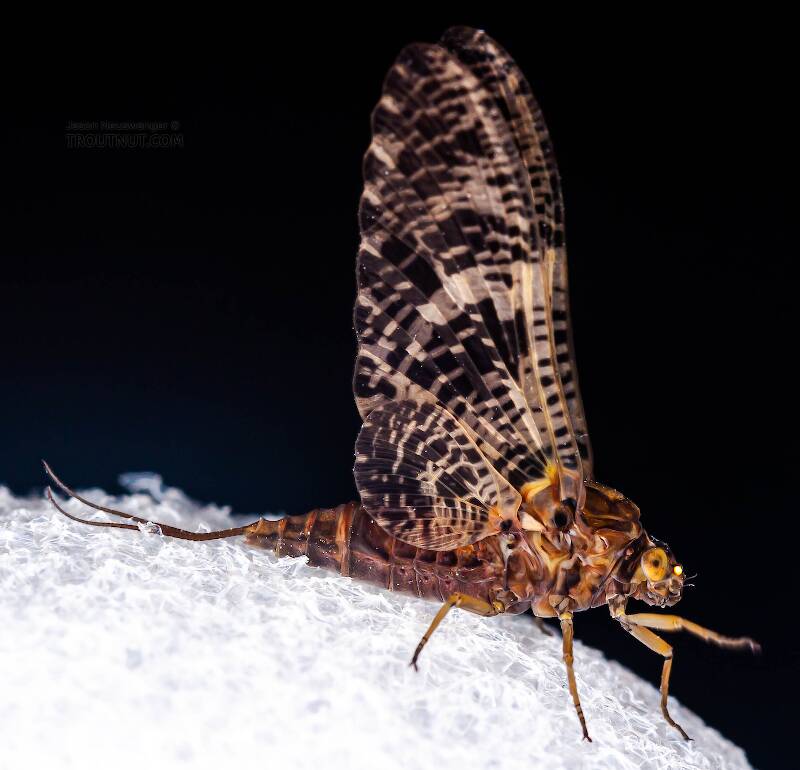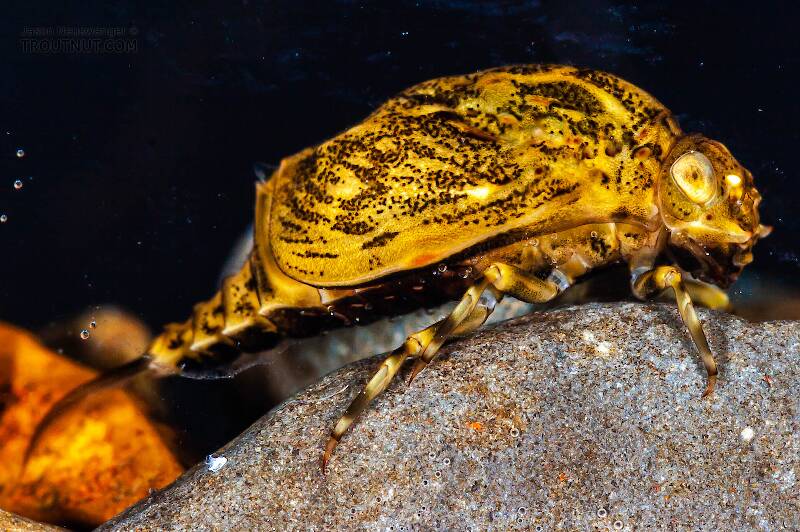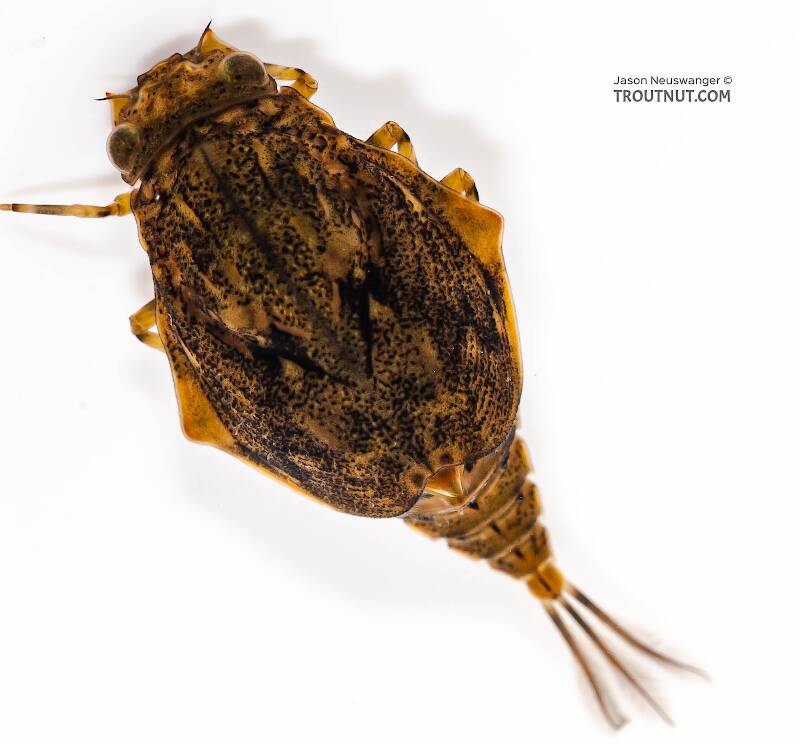
Salmonflies
Pteronarcys californica
The giant Salmonflies of the Western mountains are legendary for their proclivity to elicit consistent dry-fly action and ferocious strikes.


Mayfly Species Baetisca obesa (Armored Mayflies)
See the Baetisca genus page for more details.
Where & when
This is the most common species of Baetisca in the East. Its official range extends into the Midwest, but populations there are overshadowed by the more prolific Baetisca laurentina.In 4 records from GBIF, adults of this species have been collected during May (50%), March (25%), and June (25%).
Species Range
Physical description
Most physical descriptions on Troutnut are direct or slightly edited quotes from the original scientific sources describing or updating the species, although there may be errors in copying them to this website. Such descriptions aren't always definitive, because species often turn out to be more variable than the original describers observed. In some cases, only a single specimen was described! However, they are useful starting points.
Male Spinner
Wing length: 9-10 mm
Abdominal tergites of male imago pale reddish brown; venation yellowish on costal margin, otherwise pale.
Head ferruginous; antenna similar in color, the filament generally pale. Thorax ferruginous; sternum "paler behind, especially the space between the posterior coxae" (Walsh). Legs pale greenish yellow; in the fore leg, the apex of the femur, tips and joinings of the tarsi, are slightly fuscous. Middle and hind legs paler, only the tips of tarsi cloudy. Wings hyaline; longitudinal veins of the costal margin yellowish, radius piceous at the extreme base, "a few of the principal veins slightly tinged with fuscous” (Walsh); all other veins pale. Cross veins almost invisible. Abdominal tergites pale reddish brown, the posterior margins whitish; sternites somewhat paler. Tails whitish, the joinings fuscous, especially in the basal portion. Forceps pale, sometimes reddish toward the tip. Genitalia as in fig. 148.
Nymph
Specimens of the Mayfly Species Baetisca obesa
1 Female Dun

2 Nymphs
Discussions of Baetisca obesa
Start a Discussion of Baetisca obesa
References
- Caucci, Al and Nastasi, Bob. 2004. Hatches II. The Lyons Press.
- Knopp, Malcolm and Robert Cormier. 1997. Mayflies: An Angler's Study of Trout Water Ephemeroptera . The Lyons Press.
- Leonard, Justin W. and Fannie A. Leonard. 1962. Mayflies of Michigan Trout Streams. Cranbrook Institute of Science.
- Needham, James G., Jay R. Traver, and Yin-Chi Hsu. 1935. The Biology of Mayflies. Comstock Publishing Company, Inc.
- Schwiebert, Ernest. 1973. Nymphs. Wichester Press.
Mayfly Species Baetisca obesa (Armored Mayflies)
Species Range
Resources
- NatureServe
- Integrated Taxonomic Information System
- Global Biodiversity Information Facility
- Described by Say (1839)



